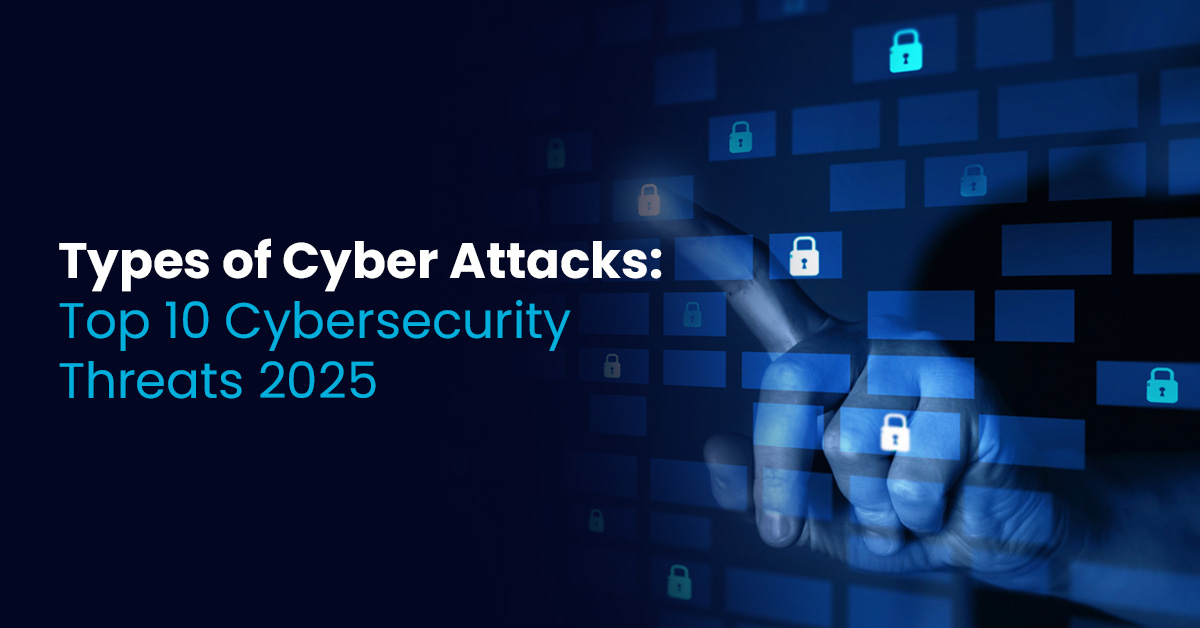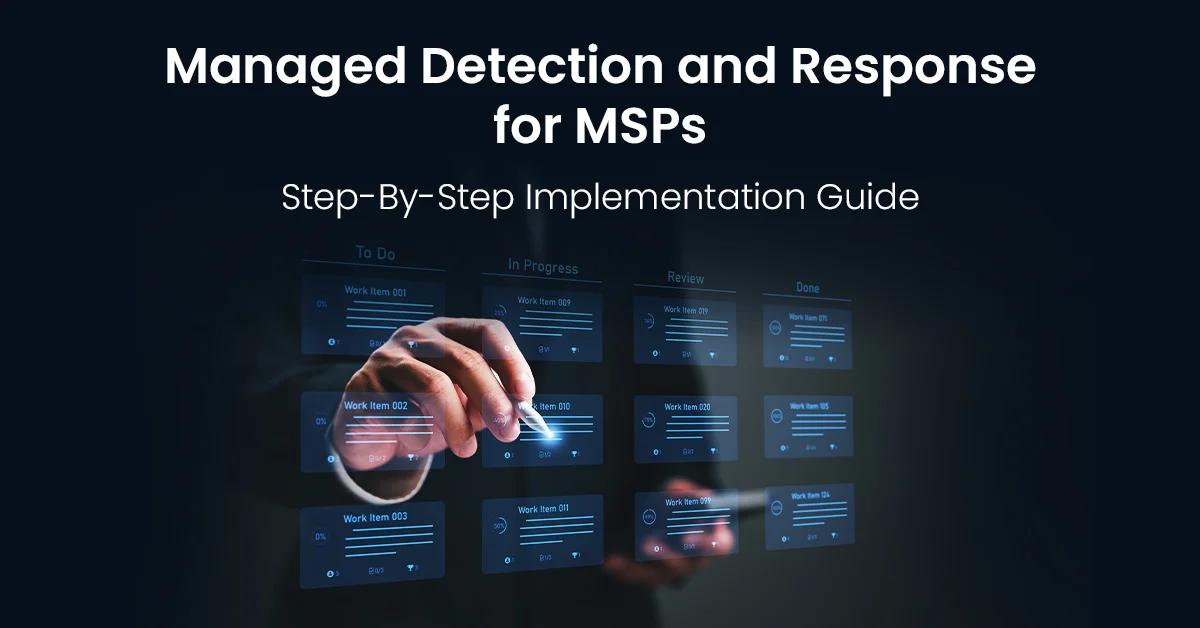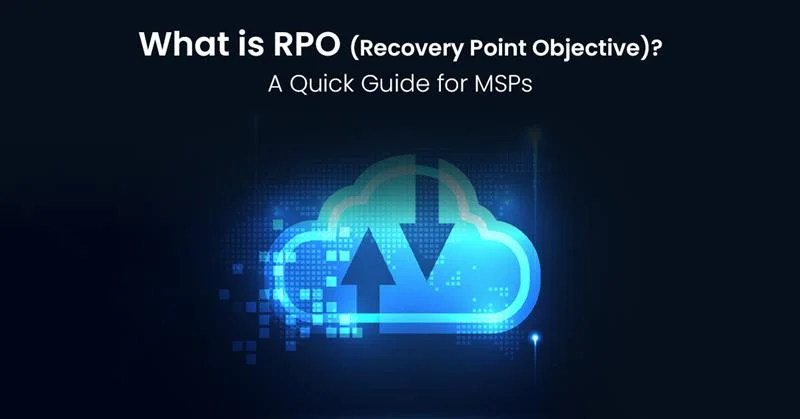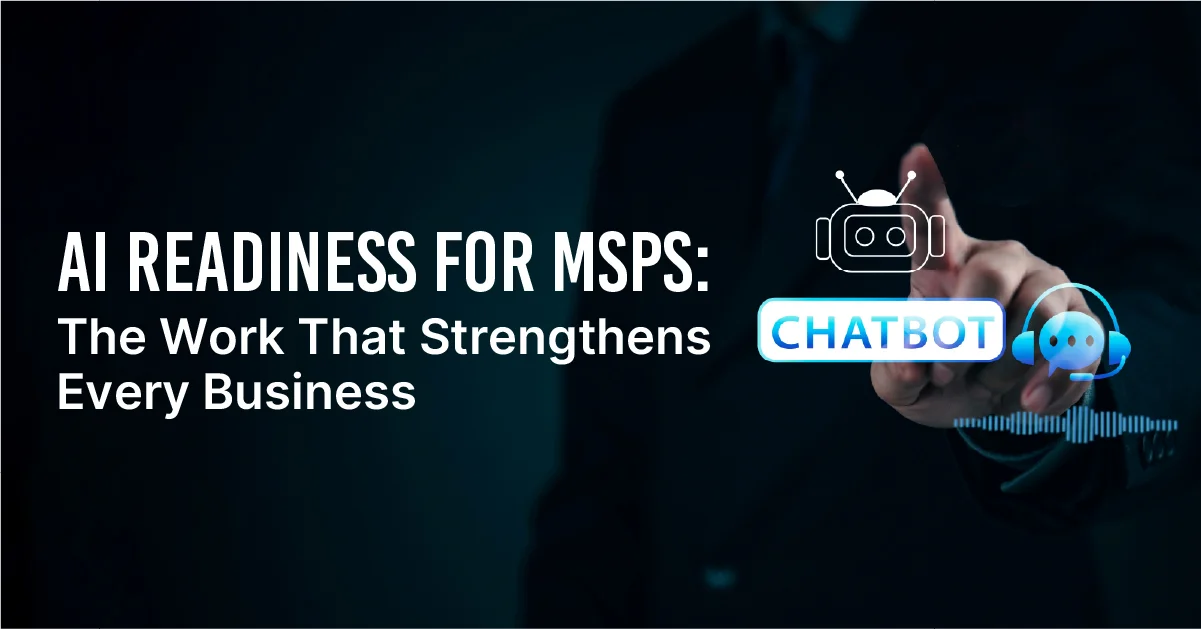What makes 2025’s cyber threats different?
Cybersecurity threats in 2025 are more advanced and harder to detect than ever before. Cyber attacks are no longer isolated incidents—they’re well-planned operations that can disrupt businesses, compromise data, and damage reputations.
Today’s cybercriminals work with the same level of coordination and precision as legitimate companies. They use modern tools, creative tactics, and detailed planning to break into systems and stay hidden. To stay ahead, organizations must understand the key types of cyber attacks and take steps to prevent them.
What is a cyber attack?
A cyber attack is a deliberate attempt to breach information systems, steal data, or disrupt digital operations for malicious purposes. These attacks target computers, networks, and digital infrastructure to gain unauthorized access, steal sensitive information or money, or cause operational damage.
What are the most common types of cyber attacks in 2025?
The landscape of cyber security threats has transformed dramatically. Gone are the days of amateur hackers seeking thrills. Today’s cybercriminals operate like Fortune 500 companies, complete with customer service departments and profit-sharing models.
Types of cyber attacks now include AI-enhanced malware, nation-state sponsored espionage, and attacks that can adapt in real-time to your security measures. As per Astra security report of 2025, ransomware or phishing attack occurs every 11 seconds globally highlighting the constant threat organizations face daily.
The evolution from simple viruses to sophisticated network security threats represents one of the most significant technological shifts of our time. These aren’t just random attacks – they’re calculated business operations targeting your most valuable assets.
Top 10 cyber security threats and solutions every organization must know
The modern threat landscape requires understanding specific types of cybersecurity threats that can devastate unprepared organizations. Here’s what’s keeping security professionals awake at night.
-
AI-enhanced ransomware
Ransomware has received an artificial intelligence upgrade that makes it terrifyingly effective. These sophisticated types of cyber attacks now learn from your network behavior, adapt to security measures, and optimize their encryption methods.
Modern AI-powered ransomware can:
- Identify the most valuable data automatically
- Evade traditional detection systems
- Negotiate ransom amounts based on your company’s financial capacity
- Spread laterally through networks with surgical precision
According to recent analysis, ransomware attacks have increased significantly in 2025, demonstrating the growing sophistication of these network security threats. The financial impact extends beyond ransom payments to include downtime, recovery costs, and regulatory fines.
Prevention strategy: implement zero-trust architecture, maintain offline backups, and deploy AI-powered security solutions with SOC service that can match the sophistication of these network security threats.
-
Phishing and social engineering
Phishing attacks have become the Swiss army knife of cyber security threats, adapting to exploit human psychology with unprecedented precision. These types of cyber attacks target the weakest link in any security chain – human nature.
Current phishing techniques include:
- Deepfake voice calls impersonating executives
- AI-generated emails that perfectly mimic writing styles
- Social media reconnaissance for highly targeted attacks
- Business email compromise (BEC) targeting financial transactions
Phishing attacks continue to be one of the most prevalent cyber security threats, with millions of malicious emails sent daily. These attacks have evolved beyond simple fake emails to include sophisticated social engineering tactics.
Real-world impact: A single successful phishing attempt can provide access to entire network infrastructures, making this one of the most dangerous types of cybersecurity threats.
-
Advanced persistent threats (APTs)
APTs represent the elite forces of cyber warfare. These network security threats involve sophisticated, long-term infiltration campaigns typically sponsored by nation-states or well-funded criminal organizations.
APT characteristics:
- Multi-year infiltration campaigns
- Custom malware designed for specific targets
- Living-off-the-land techniques using legitimate tools
- Advanced data exfiltration methods
These types of cyber attacks often remain undetected for months or years, quietly gathering intelligence and preparing for the perfect moment to strike. The SolarWinds hack demonstrated how APTs can compromise thousands of organizations through a single supply chain entry point.
Detection strategy: implement behavioral analytics, conduct regular threat hunting exercises, and establish baseline network activity patterns to identify anomalies.
-
Supply chain attacks
Supply chain attacks represent a fundamental shift in cyber security threats strategy. Instead of attacking the castle directly, cybercriminals target the drawbridge builder.
Supply chain attacks have become increasingly common as cybercriminals target the interconnected nature of modern business relationships. These network security threats can affect multiple organizations through a single compromise point.
Common supply chain vulnerabilities:
- Third-party software with embedded malware
- Compromised hardware components
- Vendor access credential theft
- Open-source library poisoning
Cyber-attack examples include the Kaseya incident that affected thousands of downstream customers and the CodeCOV breach that compromised numerous development environments.
-
Cloud security breaches
Cloud adoption has created new categories of cyber security threats that didn’t exist a decade ago. These types of cyber attacks exploit misconfigured cloud services, inadequate access controls, and shared responsibility confusion.
Cloud-specific vulnerabilities:
- Misconfigured storage buckets exposing sensitive data
- Inadequate identity and access management
- Inter-service communication vulnerabilities
- Container and serverless security gaps
The shift to cloud-first architectures has created new attack vectors that traditional security tools weren’t designed to handle. These network security threats require specialized knowledge and tools to address effectively.
Best practices: Implement cloud security posture management (CSPM), conduct regular configuration audits, and maintain principle of least privilege access.
-
IoT device vulnerabilities
The Internet of things (IoT) has created billions of entry points into organizational networks. These types of cybersecurity threats exploit weak default credentials, infrequent security updates, and poor network segmentation.
IoT security challenges:
- Default passwords that users never change
- Firmware update mechanisms that don’t exist
- Devices designed for convenience, not security
- Network segmentation failures
IoT devices continue to present significant security challenges due to weak default configurations and infrequent updates. These cyber security threats can create massive botnets capable of overwhelming network infrastructures.
Security measures: implement network segmentation, change default credentials, establish device update policies, and monitor IoT device traffic patterns.
-
Zero-day exploits
Zero-day exploits represent the ultimate nightmare scenario in cybersecurity. These network security threats target vulnerabilities that security teams don’t know exist, making them nearly impossible to defend against directly.
Zero-day characteristics:
- Unknown vulnerabilities in widely used software
- No available patches or signatures
- High success rate due to lack of defenses
- Often sold in underground markets for significant sums
The cybersecurity industry continues to discover thousands of new vulnerabilities annually, highlighting the ongoing challenge of zero-day threats. These discoveries emphasize the importance of proactive security measures.
Defense strategy: Implement behavior-based detection, maintain robust incident response capabilities, and adopt defense-in-depth strategies that can contain unknown threats.
-
Insider threats
Sometimes the call is coming from inside the house. Insider threats represent types of cyber attacks that exploit legitimate access to cause maximum damage with minimal detection risk.
Insider threat categories:
- Malicious employees seeking revenge or profit
- Negligent staff who accidentally expose systems
- Compromised credentials used by external attackers
- Third-party contractors with excessive access
These cyber security threats are particularly dangerous because they bypass perimeter security entirely. Traditional security tools often struggle to distinguish between legitimate and malicious insider activity.
Monitoring approach: Implement user behavior analytics, establish data loss prevention (DLP) controls, and maintain principle of least privilege access policies.
-
Cryptocurrency and financial fraud
The rise of digital currencies has created entirely new categories of network security threats. These types of cybersecurity threats target cryptocurrency wallets, exchanges, and defi protocols with increasingly sophisticated methods.
Crypto-specific attack vectors:
- Wallet private key theft
- Exchange platform breaches
- Smart contract vulnerabilities
- Social engineering targeting crypto holders
The decentralized and largely unregulated nature of cryptocurrency makes these cyber security threats particularly attractive to cybercriminals. Once funds are stolen, recovery is often impossible.
Protection measures: Use hardware wallets for storage, implement multi-signature requirements, and conduct smart contract security audits.
-
Deepfake and AI-generated misinformation
Artificial intelligence has democratized the creation of convincing fake content, creating new types of cyber attacks that blur the line between reality and fabrication.
Deepfake threats include:
- Fake executive video calls authorizing fraudulent transactions
- Synthetic voice calls bypassing voice authentication
- Fabricated evidence in social engineering attacks
- Market manipulation through fake news content
These network security threats exploit our fundamental trust in audio and visual evidence. As deepfake technology becomes more accessible, these attacks will become increasingly common and sophisticated.
Detection strategy: Implement multi-factor authentication beyond biometrics, establish out-of-band verification procedures, and train staff to recognize potential deepfake indicators.
How to protect against these cyber security threats and solutions
Understanding top cyber threats is only the first step. Effective protection requires a comprehensive approach that addresses both technical vulnerabilities and human factors. Essential protection strategies include:
1: 2Multi-layered security architecture
- Deploy endpoint detection and response (EDR) solutions
- Implement network segmentation and zero-trust principles
- Maintain up-to-date threat intelligence feeds
- Establish redundant security controls
2: Employee training and awareness
- Conduct regular phishing simulation exercises
- Provide ongoing cybersecurity education
- Establish clear incident reporting procedures
- Create security-conscious organizational culture
3: Proactive security management
- Perform regular vulnerability assessments
- Conduct penetration testing exercises
- Maintain comprehensive incident response plans
- Establish business continuity procedures
The reality is that modern types of cybersecurity threats require professional expertise to address effectively. The complexity and sophistication of current network security threats exceed what most organizations can handle with internal resources alone.
Why professional cybersecurity management is essential
The evolving landscape of cyber security threats demands specialized knowledge, advanced tools, and round-the-clock monitoring that most organizations cannot maintain internally.
Consider these factors:
- Complexity of modern threats: The sophistication of current types of cyber attacks requires specialized expertise to detect, analyze, and respond effectively. Security professionals spend years developing the skills needed to combat advanced network security threats.
- 24/7 monitoring requirements: Top cybersecurity threats don’t operate on business hours. Cyber attacks occur constantly, requiring continuous monitoring and immediate response capabilities to protect against network security threats.
- Regulatory compliance demands: Modern cybersecurity regulations require documented procedures, regular assessments, and proven incident response capabilities. Professional security services ensure compliance with industry standards and regulatory requirements.
- Cost-effective resource allocation: Building internal capabilities to address all types of cybersecurity threats would require significant investment in personnel, tools, and training. Professional services provide access to enterprise-level security capabilities at a fraction of the cost.
Conclusion!
These top 10 cyber security threats require sophisticated detection and expert analysis to combat effectively. Understanding different types of cyber attacks is crucial, but implementation requires specialized expertise.
IT By Design’s Security Operations Center (SOC) services provide comprehensive protection against all types of cybersecurity threats with 24/7 monitoring, advanced threat detection, and immediate incident response.
Don’t wait for the cyber attack to expose your vulnerabilities.








